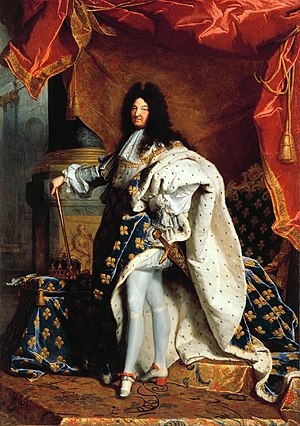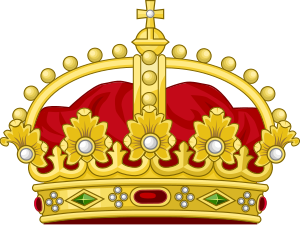Version 1.1 of the definition has been released. Please help updating it, contribute translations, and help us with the design of logos and buttons to identify free cultural works and licenses!
Template:Req DRM
No DRM or TPMYou must not restrict access to the work using technical measures, or otherwise attempt to impose limitations on the freedoms above. |
Template:Use dmy dates Template:Refimprove Template:Infobox religious building Maghsoudbeyk mosque (Template:Lang-fa) is near the northeastern corner of Naqsh-e Jahan Square. It was built in 1601 by the order of Maghsoudbeyk, who was one of the very rich stewards of Abbas I. There is an inscription in the mihrab of this mosque, which is one of artworks of the famous calligrapher of the Safavid era Ali Reza Abbassi. It's said, after that Shah Abbas was very satisfied with this inscription, he ordered Ali Reza Abbassi to work on the inscriptions of Sheikh Lotfollah Mosque. Behind the entrance hall of the mosque in a small chamber, there's a tomb which is the tomb of Mir Emad, the art rival of Ali Reza Abbassi. Maghsoudbeyk mosque was a very glorious and beautiful mosque in Isfahan in the Safavid era.[1]Template:Other uses{{Infobox military unitTemplate:About Template:Refimprove Template:Infobox Law enforcement agency The United States Naval Criminal Investigative Service (NCIS) is the primary law enforcement agency of the United States Department of the Navy. Its primary function is to investigate criminal activities involving the United States Navy and United States Marine Corps, though its broad mandate includes national security, counter-intelligence, counter-terrorism, cyber warfare, and the protection of U.S. naval assets worldwide. NCIS is the successor organization to the former Naval Investigative Service (NIS), which was established by the Office of Naval Intelligence after the Second World War.
The vast majority of NCIS personnel are civilian, roughly half of whom are special agents trained to carry out a wide variety of assignments around the world. NCIS agents are armed federal law enforcement investigators, who frequently coordinate with other U.S. government agencies and have a presence in over 40 countries, as well as on U.S. Navy vessels. NCIS special agents are supported by analysts and other experts skilled in disciplines such as forensics, surveillance, surveillance countermeasures, computer investigations, physical security, and polygraph examinations.
| unit_name= Army Cadet Force (ACF)
| image=  |caption= Crest
| dates =
|country= United Kingdom
| role= Volunteer Youth Organisation British Army
| size= 41,370 Cadets[2]
|caption= Crest
| dates =
|country= United Kingdom
| role= Volunteer Youth Organisation British Army
| size= 41,370 Cadets[2]
9,170 Cadet Force Adult Volunteers[2]
| garrison= CTC Frimley Park
| garrison_label= Headquarters
| motto= To Inspire To Achieve
| website=armycadets.com
| commander3= HRH The Duke of Edinburgh[3]
| commander3_label= Colonel in Chief
| identification_symbol =
| identification_symbol_label = ACF Colours |start_date= 1869[3] | tagline= Going Further | current_commander= Maj Gen Duncan Capps CBE | current_commander_label= GOC Support Command | ceremonial_chief= Queen Elizabeth II[3] | ceremonial_chief_label= Patron }}
The Army Cadet Force (ACF) is a national youth organisation sponsored by the United Kingdom's Ministry of Defence and the British Army. Along with the Sea Cadet Corps and the Air Training Corps, the ACF make up the Community Cadet Forces. It is a separate organisation from the Combined Cadet Force which provides similar training within principally independent private schools.
Although sponsored by the Ministry of Defence, the ACF is not part of the British Army or Army Reserve, and as such cadets are not subject to military 'call up'. Some cadets do, however, go on to enlist in the armed forces in later life, and many of the organisation's leaders have been cadets or have a military background.
The Army Cadet Force Association (ACFA) is a registered charity that acts in an advisory role to the Ministry of Defence and other Government bodies on matters connected with the ACF.[4][5] The Army Cadet Force is also a member of The National Council for Voluntary Youth Services (NCVYS), as an organisation with a voluntary and community youth focus.[6]
As of 1 April 2015 there are 50,540 Cadets and Cadet Force Adult Volunteers.[2]


King is the title given to a male monarch in a variety of contexts. The female equivalent is queen regnant (while the title of queen on its own usually refers to the consort of a king).
- In the context of prehistory, antiquity and contemporary indigenous peoples, the title may refer to tribal kingship. Germanic kingship is cognate with Indo-European traditions of tribal rulership (c.f. Indic rājan, Gothic reiks, and Old Irish rí, etc.)
- In the context of classical antiquity, king may translate Latin rex or either Greek archon or basileus.
- In classical European feudalism, the title of king as the ruler of a kingdom is understood as the highest rank in the feudal order, potentially subject, at least nominally, only to an emperor (harking back to the client kings of the Roman Empire).[7]
- In a modern context, the title may refer to the ruler of one of a number of modern monarchies (either absolute or constitutional). The title of king is used alongside other titles for monarchs, in the West prince, emperor, archduke, duke or grand duke, in the Middle East sultan or emir; etc.[8]
- ↑ Template:Cite book
- ↑ 2.0 2.1 2.2 Template:Cite web
- ↑ 3.0 3.1 3.2 Template:Cite web
- ↑ Charity Commission "THE ARMY CADET FORCE ASSOCIATION"
- ↑ Template:Cite web
- ↑ Full list of NCVYS members Template:Webarchive
- ↑ The notion of a king being below an emperor in the feudal order, just as a duke is the rank below the king, is more theoretical than historical: the only kingdom within the Holy Roman Empire was the Kingdom of Bohemia; the Austrian Empire technically contained the kingdom of Hungary, but the emperor and the king were the same person. The modern Russian Empire and German Empire did not include any kingdoms; only the short-lived First French Empire (1804–1814/5) did include a number of client kingdoms under Napoleon I, such as the Kingdom of Italy or the Kingdom of Westphalia.
- ↑ Template:Cite book

